The Definition of Canine Freework
Table of Contents
Canine Freework is a dynamic and engaging approach to dog training that emphasizes the natural behaviors and instincts of dogs. It involves allowing dogs to explore their environment freely, using their senses to interact with various stimuli without the constraints of traditional obedience commands. This method encourages mental stimulation, physical exercise, and emotional well-being by providing dogs with opportunities to make choices and solve problems on their own. Canine Freework is designed to enhance the bond between dogs and their handlers, promote confidence, and reduce stress by creating a more enriching and fulfilling experience for the dog.
Understanding The Basics Of Canine Freework
Canine freework is an innovative approach to dog training that emphasizes the importance of allowing dogs to explore their environment freely, thereby fostering natural behaviors and enhancing their overall well-being. This method diverges from traditional training techniques that often rely on structured commands and rigid routines. Instead, canine freework encourages a more holistic understanding of a dog’s needs, focusing on mental stimulation, physical exercise, and emotional balance.
At its core, canine freework is about providing dogs with the opportunity to engage in self-directed activities. This can include anything from sniffing and exploring different textures to interacting with various objects and navigating diverse terrains. By allowing dogs to make choices and follow their instincts, freework helps to build their confidence and independence. This approach is particularly beneficial for dogs that may be anxious or reactive, as it provides a safe and controlled environment for them to express themselves without the pressure of performing specific tasks.
One of the fundamental principles of canine freework is the recognition of the dog’s sensory world. Dogs experience their surroundings primarily through their sense of smell, and freework capitalizes on this by incorporating scent-based activities. For example, scattering treats in a designated area or hiding toys for the dog to find can engage their olfactory senses and provide mental stimulation. This not only keeps the dog entertained but also helps to tire them out mentally, which can be just as important as physical exercise.
Moreover, canine freework promotes physical health by encouraging natural movement patterns. Traditional training often involves repetitive actions that can lead to physical strain or injury over time. In contrast, freework allows dogs to move in ways that are more aligned with their natural instincts, such as climbing, digging, and foraging. This variety of movements can help to improve their overall fitness and prevent the development of musculoskeletal issues.
In addition to the physical and mental benefits, canine freework also plays a crucial role in strengthening the bond between dogs and their owners. By participating in freework activities together, owners can gain a deeper understanding of their dog’s preferences and behaviors. This shared experience fosters mutual trust and respect, which are essential components of a healthy human-canine relationship. Furthermore, observing a dog during freework can provide valuable insights into their emotional state, allowing owners to address any underlying issues that may not be apparent during more structured training sessions.
Transitioning to a freework-based approach requires a shift in mindset for many dog owners. It involves letting go of the need for control and embracing the idea that dogs are capable of making their own decisions. This can be challenging, especially for those accustomed to traditional training methods. However, the rewards of canine freework are well worth the effort. By creating an environment that encourages exploration and self-expression, owners can help their dogs to lead happier, healthier lives.
In conclusion, understanding the basics of canine freework involves recognizing the importance of allowing dogs to engage in self-directed activities that cater to their sensory, physical, and emotional needs. This approach not only enhances the well-being of the dog but also strengthens the bond between the dog and its owner. By embracing the principles of freework, dog owners can provide a more enriching and fulfilling life for their canine companions.
The Benefits Of Canine Freework For Your Dog

Canine freework, a relatively new concept in the realm of dog training and enrichment, offers a multitude of benefits for our four-legged companions. This approach emphasizes allowing dogs to engage in natural behaviors and make choices within a controlled environment, thereby fostering mental stimulation, physical exercise, and emotional well-being. As we delve into the benefits of canine freework, it becomes evident that this method can significantly enhance the quality of life for dogs.
One of the primary advantages of canine freework is the mental stimulation it provides. Dogs, much like humans, require mental challenges to stay sharp and engaged. Traditional training methods often focus on obedience and repetitive tasks, which, while beneficial, may not fully satisfy a dog’s cognitive needs. In contrast, freework encourages dogs to explore their surroundings, solve problems, and make decisions independently. This mental engagement can help prevent boredom and reduce the likelihood of behavioral issues stemming from a lack of stimulation.
Moreover, canine freework promotes physical exercise in a manner that is both enjoyable and beneficial for dogs. Unlike structured exercise routines, freework allows dogs to move at their own pace and engage in activities that naturally appeal to them. This can include sniffing, digging, climbing, and other instinctual behaviors. By catering to a dog’s innate desires, freework ensures that physical activity is not only effective but also enjoyable. This can lead to improved physical health, including better cardiovascular fitness, muscle tone, and joint flexibility.
In addition to mental and physical benefits, canine freework also plays a crucial role in enhancing a dog’s emotional well-being. Allowing dogs to make choices and engage in activities they find rewarding can boost their confidence and reduce stress. This is particularly important for dogs that may have experienced trauma or have anxiety issues. By providing a safe and controlled environment where they can explore and express themselves, freework helps build trust and a sense of security. Over time, this can lead to a more balanced and emotionally resilient dog.
Furthermore, canine freework can strengthen the bond between dogs and their owners. Traditional training often involves a top-down approach, where the owner dictates the activities and the dog follows commands. While this is essential for teaching obedience and ensuring safety, it can sometimes create a dynamic where the dog feels less autonomous. Freework, on the other hand, encourages a more collaborative relationship. Owners observe and support their dogs as they explore and engage with their environment, fostering mutual respect and understanding. This can lead to a deeper connection and a more harmonious relationship.
Another significant benefit of canine freework is its adaptability. This approach can be tailored to suit dogs of all ages, breeds, and temperaments. Whether you have a high-energy puppy or a senior dog with mobility issues, freework can be adjusted to meet their specific needs and capabilities. This inclusivity ensures that all dogs can reap the benefits of this enriching activity, regardless of their individual circumstances.
In conclusion, the benefits of canine freework are manifold, encompassing mental stimulation, physical exercise, emotional well-being, strengthened bonds, and adaptability. By allowing dogs to engage in natural behaviors and make choices within a controlled environment, freework offers a holistic approach to enhancing their quality of life. As more dog owners and trainers recognize the value of this method, it is likely that canine freework will continue to gain popularity, ultimately contributing to the well-being of countless dogs.
How To Get Started With Canine Freework
Canine Freework is an innovative approach to dog training that emphasizes the importance of allowing dogs to explore their environment freely, thereby enhancing their physical and mental well-being. This method is particularly beneficial for dogs that exhibit signs of stress, anxiety, or behavioral issues, as it provides them with an opportunity to engage in natural behaviors in a controlled setting. To get started with Canine Freework, it is essential to understand the fundamental principles that underpin this training method and to create an environment that fosters exploration and learning.
The first step in implementing Canine Freework is to select an appropriate space for your dog to explore. This area should be safe, secure, and free from potential hazards that could cause injury or distress. Ideally, the space should be large enough to allow your dog to move around freely and should include a variety of textures, surfaces, and objects that can stimulate their senses. For instance, you might incorporate items such as soft mats, rubber tiles, wooden planks, and even shallow water trays to provide a diverse sensory experience.
Once you have established a suitable environment, the next step is to introduce your dog to the space gradually. It is important to allow your dog to explore at their own pace, without any pressure or expectations. This can be achieved by simply opening the door to the designated area and letting your dog wander in and out as they please. During this initial phase, it is crucial to observe your dog’s behavior closely, taking note of any signs of stress or discomfort. If your dog appears anxious or hesitant, it may be necessary to adjust the environment or provide additional support to help them feel more at ease.
As your dog becomes more comfortable with the space, you can begin to introduce various activities and challenges that encourage exploration and problem-solving. For example, you might scatter treats or toys throughout the area, prompting your dog to use their nose and paws to locate and retrieve them. Additionally, you can create simple obstacle courses using household items such as chairs, cushions, and boxes, which can help to build your dog’s confidence and coordination. It is important to remember that the goal of Canine Freework is not to achieve specific outcomes or behaviors, but rather to provide your dog with opportunities to engage in natural, self-directed activities.
Throughout the process, it is essential to maintain a positive and supportive attitude, offering praise and encouragement as your dog explores and interacts with their environment. This can help to reinforce the idea that the space is a safe and enjoyable place, further promoting relaxation and well-being. Moreover, it is important to be patient and flexible, as each dog will respond to Canine Freework differently, and progress may vary depending on their individual temperament and experiences.
In conclusion, getting started with Canine Freework involves creating a safe and stimulating environment, allowing your dog to explore at their own pace, and introducing activities that encourage natural behaviors. By following these steps and maintaining a positive, supportive attitude, you can help your dog to develop greater confidence, reduce stress, and enhance their overall quality of life. As with any training method, it is important to remain patient and adaptable, recognizing that each dog is unique and may require different levels of support and encouragement.
Read more about Canine Freework
What is Canine Freework?
– The Definition of Canine Freework
– Benefits of Canine Freework for Dogs
– History of Canine Freework
– Different Types of Canine Freework
– How to Get Started with Canine Freework


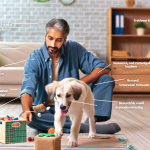
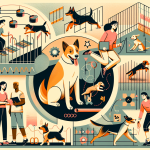

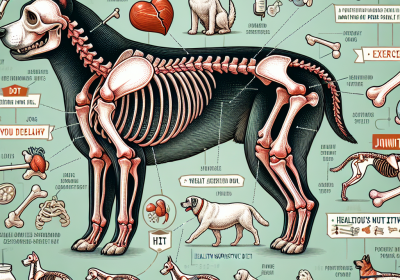
![The Dog Podcast Uncovers Startling Truths About What We Feed Our Dogs [Press Release]](https://insightfulwords.com.au/wp-content/uploads/2024/08/nutritious-dog-food-400x280.jpg)
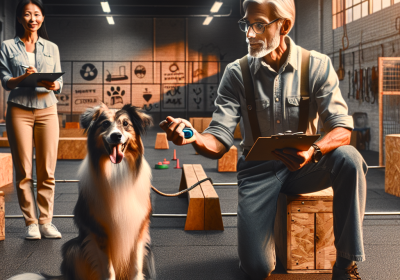
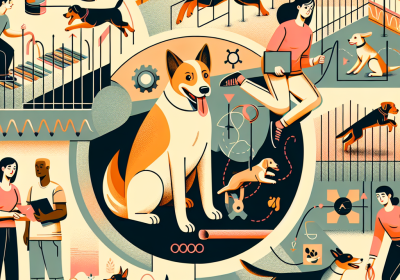
![The Dog Podcast Uncovers Startling Truths About What We Feed Our Dogs [Press Release] The Dog Podcast Uncovers Startling Truths About What We Feed Our Dogs [Press Release]](https://insightfulwords.com.au/wp-content/uploads/2024/08/nutritious-dog-food-75x60.jpg)